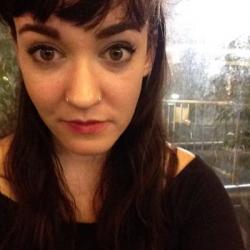It’s raining as myself and my road trip partner set off on our six hour jaunt to Mývatn, in northern Iceland. It’s a dreamy area, punctuated by steamy hot springs, caves, and brusque lava fields, which sprawl around the shore of one of Iceland’s biggest lakes. As the rain beats down, we pass through jagged mountains covered in deep purplish heather and daubed with olive green, rusty red, and the occasional flash of ochre. I’m reminded of the smudgy and bold colours of oil pastels. Eventually, the mountains give way into a calming fjord, lapping slowly. I feel reverent.

After a brief stop in Húsavík, we finally arrive in the tiny village of Reykjahlíð. Lake Mývatn winks in the sunlight, serene and beautiful. We spend a minute watching a group of ducks glide across the water, then set off again for Dimmuborgir.
An eerie calm









Dimmuborgir, or the “Black Fortress,” is a 1km stretch of erratically shaped lava columns. They formed when hot lava cascaded over the ponds trapped beneath, causing the rising steam to form vents in the lava. The resulting cavern then collapsed, leaving behind a maze of rubble and strange, contorted pillars. They’re imposing structures, with pockmarked frames that twist chaotically. I’m told of the legend that Satan landed here after being cast from heaven, but all I feel as we walk between them is calmness.
The next stop is the Hofði peninsula. Creeping through its innocuous little entry gate, we find a wooded area fringed with flowers and a panoramic view of Mývatn. Lava formations stitched with spongy moss spiral out of the water into grassy craters. In the distance, a ring of mountains is bathed in golden September sunshine. Padding silently back through the woods, once again I feel reverent.
Strange new world












We kick off the next day by relaxing in the soothing geothermal waters of the Mývatn Nature Baths. I forget to take out my nose rings, despite ample warning, and the sulphur in the water turns them from silver to black. “You look more metal now,” says my companion. It’s a more fitting look for storming up to Krafla. You can’t get much more metal than a volcano.
We peer into the rich teal depths before swinging round to Grjótagja, a formerly popular bathing site tucked away inside a lava cave with an impressive fissure along its top. Next, we tackle a series of pseudocraters, and we enjoy mingling amongst the sheep grazing on their slopes, which are spoiled only by an unsightly concrete walkway along one of the peaks.

Our final stop is the otherworldly Mt. Námafjall, or “Hell’s Kitchen.” Streaks of sulphur paint the ground, pots of mud bubble and pop, and plumes of pungent steam roll from the fumaroles. It’s yet another startling, alien landscape.
I fall asleep on the way home, and when I wake at around 11pm, I see the telltale glow of Reykjavík ahead. Soon, we’re weaving through industrial suburbs. Lights swim in front of my bleary eyes and I say a silent goodbye to the unspoilt, extra-terrestrial world of the North.
Buy subscriptions, t-shirts and more from our shop right here!














